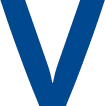VERBUND puts Europe’s highest fish pass into operation
Forty years after its construction, the power plant at Annabrücke on the Drava is being upgraded with a brand-new fish pass. The fish can migrate upstream and downstream in a complex system of 172 small pools. A video system monitors them online.
“As Austria’s biggest hydropower operator, we understand our responsibility for the environment and have been demonstrating the compatibility of all requirements for decades by providing outstanding services. Where possible in these difficult times, we are implementing our long-term plans to improve the ecology on Austria’s rivers with our partners. We are setting new standards in Europe with our measures: in 2018 with the longest fish pass and now in 2020 with the highest fish pass,” says Achim Kaspar, member of the Executive Board responsible for generation at VERBUND. VERBUND is investing a total of around 280 million euros in making its more than 130 hydropower plants more environmentally friendly, thereby also making valuable contributions to stimulating economic activity.
“The creation and networking of habitats makes a vital contribution to the preservation and improvement of biodiversity in our waters. Since 2009, we have built more than 1,000 fish ladders in accordance with the national waterbodies management plans; numerous new ones are being planned or are under construction. The new fish pass in Annabrücke overcomes 26 vertical metres and is thus the highest in Europe. The Federal Ministry for Agriculture, Regions and Tourism supported the project with 450,000 euros,” emphasised Federal Minister Elisabeth Köstinger at the opening ceremony.
President of the provincial parliament Reinhart Rohr was also pleased: “Things are getting better in Carinthia, not only with the fish but also with the environmental protection! In my time as environment spokesperson for the province of Carinthia until 2010, I set the initial accents in this area. Now, ten years later, the whole of Carinthia is proud to be able to open the highest fish pass in Europe. The use of nature and the simultaneous consideration of its needs is the forward-looking approach to a sustainable Carinthia – and we have taken another decisive step forwards with this project.”
28 million euros for barrier-free power plants in Carinthia
“Hydropower is rightly considered to be the cleanest form of energy generation. We are endeavouring to maintain our plants technically and environmentally on the cutting edge of technology, which naturally also includes ensuring continuity for fish. In this way, we are giving a bit of species diversity back to heavily modified waterbodies,” says Karl Heinz Gruber, managing director of VERBUND Hydro Power GmbH. With the initial operation of the fish pass at the Annabrücke power plant, 8 of the 10 Drava power plants are now passable to fish again. Total continuity over a distance of 260 kilometres should be possible by 2022. “The migration aid currently under construction at the power plant in Ferlach should be commissioned in autumn 2021 and the last one at the Feistritz power plant should be ready by September 2022,” adds Gruber.
In Carinthia, VERBUND is investing around 28 million euros in ecological measures on the Drava and at its storage power plants at Malta and Reißeck until 2022. Including planning and monitoring measures, 3.5 million euros of this will be spent on the fish pass at Annabrücke.
New standards in structural execution
The difference in height between the top and bottom of the Drava power plant at Annabrücke is 26 metres. To enable fish to overcome this needs a complex system of 172 concrete ponds and 21 resting pools.
The pond structure is specially designed for the range of fish living in the Drava and is noted for having very slow flow speeds in the individual areas. The water movements are kept constantly calm by the double slot. So the fish save energy. The natural river bed in the fish pass is a valuable habitat for microorganisms and the tiniest lifeforms, such as, for example, larvae and fish food. The fish pass is actually a migration corridor, as all forms of aquatic life can use this stretch.
Of particular importance is the ascent aid for the so-called medium-distance migrants amongst the fish, which carry out extended, upstream spawning migrations of up to several hundred kilometres to find suitable spawning grounds and then to seek out their original habitats downstream again.
Function check running successfully
Each fish pass on the Drava is checked after completion by means of extensive fish-ecological monitoring. Amongst other things, this involves recording the migration of fish by means of video monitoring – contactless, free of stress and without disruption for the fish.
There is a short video clip of each fish that visits the fish passes. The precise timing, species of fish, length and direction (up or down) are determined and stored in a database.
In total, several hundred thousand fish have been recorded so far. This has made it possible to prove that all species of fish present in the Drava, including weakly swimming small and juvenile fish, are already successfully migrating through the fish passes. Especially pleasing is the documented upstream migration of the “measurement fish”. For example, several catfish with lengths in excess of 120 cm have already been recorded.


